Le mutande, i tacchi a spillo e lo zuccotto? E no, non sto parlando di una festa sfrenata e fuori controllo. Invece sto parlando di alcune cose che una donna straordinaria ha inventato quasi quattrocento settantacinque anni fa. Chi sarebbe chiederete? Beh, non è altro che Caterina de Medici, una fiorentina, figlia di Lorenzo II, duca di Urbino, e di Madeleine de La Tour d’Auvergne, Contessa di Boulogne, che purtroppo morirono entrambi alcune settimane dopo la nascita di Caterina nel 1519. Nonostante fosse rimasta orfana da bambina, aveva molto fegato (avere fegato significa avere coraggio), in altre parole, era una ragazza audace e determinata che ha superato molte difficoltà per diventare una donna di potere che ha influenzato la cultura e che ha lasciato un’eredità importante.
Underwear, high heels, and a frozen dessert? And no I’m not talking about a wild and crazy party. Instead, I’m talking about some things an extraordinary woman invented about four hundred and seventy-five years ago. Who would that be you ask? Well, none other than Catherine de’ Medici, a Florentine, daughter of Lorenzo II, the Duke of Urbino and Madeleine de La Tour d’Aubergne, Countess of Boulogne, who both, unfortunately, died a few weeks after Catherine’s birth in 1519. Although she was orphaned at childhood, she actually had the fortitude (in Italian they say to have “liver” which means to have courage), in other words, she was a daring girl who had moxie and overcame many difficulties to become a powerful woman who influenced culture and left an important legacy.
Prima di tutto, parliamo del suo contributo al mondo delle scarpe, perché sono sicura che tutti voi volete sapere che diavolo ha dovuto fare Caterina con i tacchi a spillo. A quattordici anni Caterina si sposò con Enrico II, il futuro re di Francia. Si sentiva insicura della sua bassa statura, quindi con l’aiuto di un’artigiano fiorentino disegnò i primi tacchi a spillo moderni. Caterina usò i tacchi alti (10cm!) come espediente per non sembrare eccessivamente piccola e insignificante.
First of all, let’s talk about her contribution to the shoe world because I’m sure you all want to know what the hell Catherine had to do with high heels! At fourteen Catherine was married off to Henry II, the future king of France. She felt insecure about being so short, so with the help of a Florentine artisan he designed the first pair of stiletto heels. Catherine used heels that were 10cm tall.
Quando arrivò in Francia indossando queste scarpe, suscitò molto scalpore. Christian Louboutin deve molto a Caterina! A proposito, quel primo incontro tra i futuri sposi fu molto importante per l’industria dei profumi in Francia. Caterina era così disgustata del cattivo odore che emanava il futuro re di Francia che quel giorno decise di introdurre il profumo e far diventare popolare la pratica di usare acqua e sapone e per pulire e curare la persona. Sembra proprio che lei abbia subito insegnato a quei francesi una cosa o due!
When she arrived in France she made quite a stir in those heels. Christian Louboutin owes a lot to Catherine! By the way, that first meeting between the future spouses was very important also for the perfume industry in France. Catherine was so disgusted by the foul smell of the future King of France that she decided to introduce perfume and make it mandatory to use soap and water to bath with every day. Right from the get-go she showed those French a thing or two!
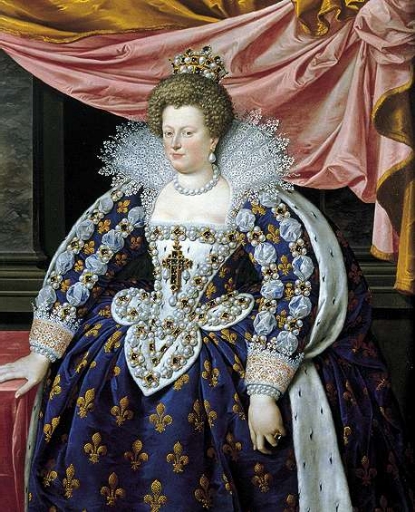
È un po’ triste che Caterina non fosse molto popolare in Francia. I francesi non l’hanno mai accettata perché era straniera e proveniva da una famiglia di banchieri e non da una famiglia reale (che snob!) Ecco perché per la maggior parte della sua vita è stata chiamata “quella donna italiana.” In oltre non era la sposa che Enrico II si aspettava. Caterina era un po’ grassottella, avevea gli occhi sporgenti e il naso grande, tipico dei Medici (poverina!). Poiché aveva una vita ampia, ha inventato il primo corsetto e ha costretto tutte le donne di corte ad indossarlo.
It’s kind of too bad that Catherine wasn’t very popular in France. The French never really accepted her because she was a foreigner and came from a family of bankers and not from a royal family (snobs!) This is why for the most part of her life she was referred to as “that Italian woman.” Moreover, she wasn’t the bride that Henry II expected. Catherine was a little plump had bulging eyes and a large nose—typical of the Medici. (Poor thing!) Because she had such a wide waist, she invented the first corset and forced all the court women to wear it.
Dal quel momento per circa 350, le donne hanno portato un corsetto fatto di ossa e metallo che in alcuni casi riduceva la loro vita a 38-43 centimetri o meno (cioè circa 15-17 pollici gente!) È chiaro che Caterina non era un fan degli esercizi addominali e ha vissuto anni prima che lo spandex e lo spanx venissero inventati!
From that moment for about 350 years onward, women wore corsets made of bone and metal that in some cases made their waists up to 38-43 centimeters or less (that’s about 15-17 inches folks!). It’s pretty clear Catherine wasn’t a fan of abdominal exercises and lived years before spandex and spanx were invented.

La vita a corte non fu facile per Caterina e il suo matrimonio non fu felice. Suo marito era un uomo dal carattere debole, che ebbe una relazione con Diane de Poitiers, un’altra donna nella sua corte che l’ha manipolato. Inoltre, era responsabilità di Caterina generare un figlio, il futuro re di Francia. Fu un po’ problematico perché all’inizio risultò sterile. Era molto supersiziosa e provò alcuni rimedi piuttosto disgustosi che avevano a che fare congli escrementi delle mucche e l’urina dei cavalli (questo è tutto quello che ho intenzione di dire di quella faccenda!)
Life at court wasn’t easy for Catherine and her marriage wasn’t a happy one. Her husband, weak of character, had an affair with Diane de Poitiers—another woman in his court and she manipulated him. In addition, there was pressure for Catherine to produce a son, the future King of France. A bit problematic because at first, because she was infertile. She was very superstitious and tried some pretty disgusting remedies involving the excrement of cows and the urine of horses (that’s all I’m going to say about that!)
Meno male che il dottore scoprì alcune anomalie e dopo un intervento chirurgico (non voglio nemmeno sapere ciò che fece!) il problema di fertilità si risolse. E poi—BAM! Ebbbe nove figli! Suo marito non visse troppo a lungo (probabilmente logorato da fare nove figli E avere un rapporto con un’altra donna!) Dopo la sua morte, i suoi figli Franceso II, Carlo IX ed Enrico III, tutti tre ad un certo punto diventarono Re di Francia. Caterina divenne la regina reggente per tutti. Cosè in realità fu Caterina de’ Medici che governò la Francia per trent’anni dopo la morte del marito Enrico II.
Thank goodness the doctor found some anomalies and after a surgical procedure (I don’t even want to know what he did to her!) her fertility problem was resolved. And then bam! She had nine kids! Her husband didn’t live too long, (probably worn out from making 9 kids AND having an affair!) After his death, his sons Francis II, Charles IX and Henry III all at some point became King of France. Caterina was the Queen Regent for all three children. So it was actually Catherine de’ Medici who ruled France for thirty years after her husband Henry II died.
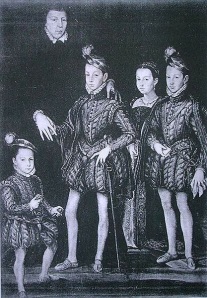
Ovviamente era una donna coraggiosa, dopotutto ha governato la Francia con i tacchi a spillo e un corsetto. Non è un compito facile quando non si può respirare e si oscilla su scarpe traballanti. Chi avrebbe mai immaginato che avrebbe anche inventato la biancheria intima—le mutande! Perché? Be’ era una donna appassionata di equitazione, quindi per rendere le cose più facile inventò le mutande per poter montare un cavallo più facilmente (ehm!). Il termine mutande deriva dal latino e significa “ciò che si deve cambiare.”
Obviously, she was a brave woman, after all, she ruled France with high heels and a corset. Not an easy task when you can take a deep breath and you are swaying around on a pair of wobbly shoes. Who would have imagined she would also have invented underwear! Why? Well, she was a passionate horsewoman and like to ride—so to make things a little easier she invented knickers so she could mount her horse more easily (ahem!). The term underpants is borrowed from Latin and means “what must be changed.”

Oltre ad influenzare la moda francese, Caterina è stata anche considerata un’ambasciatrice dei sapori italiani alla corte di Francia. Portò con sè in Francia dei pasticcieri e dei grandi chef italiani. Dava feste magnifiche e opulente e in questo modo insegnò il gusto per la buona tavola. Fu lei a promuovere l’uso della posate eleganti, specialmente la forchetta che i fiorentini usavano già a quei tempi, i bicchieri di lusso e le tovaglie ricamate.
In addition to influencing French fashion, Catherine was also considered an “ambassador of food” bringing of Italian “flavors” to the French Court. She brought with her pastry chefs as well other chefs to prepare extravagant meals. It was she then who helped create the atmosphere of great cuisine that the French are so well known for. It was also Catherine who encouraged setting a fine table, using a Florentine invention—the fork! She also set her tables with fine lines, embroidered napkins and elegant glassware.
Introdusse anche l’uso dell’olio d’oliva, le crespelle, gli spinaci, i fagioli, i piselli e i carciofi. Le sue buone maniere a tavola interruppero anche la tradizione medioevale di mangiare cibi dolci e salati insieme. I cronisti dell’epoca dicono che dopo aver servito il pranzo, arrivavano i dolci, tanti piatti freddi a base di lamponi, arance e limoni. Caterina aveva un vero talento per preparare i sorbetti, la frutta sciroppata, le marmellate e altri dolci come lo Zuccotto e il primo gelato, con l’aiuto di Giuseppe Ruggeri (un macellaio italiano appassionato di cucina!) Ecco la ricetta per l0 Zuccotto di Caterina! Ecco la ricetta per l0 Zuccotto di Caterina!
She introduced to the French olive oil, crepes, spinach, beans, peas, and artichokes. Her table manners also broke with the medieval tradition of eating desserts and salty foods together. The reports of the time, say that only after a fine lunch came the desserts—many cold dishes prepared with raspberries, oranges, and lemons. Catherine had a real talent for preparing sorbets dripped in fruit syrup, jam, and Zuccotto—the first ice cream! With the help of Giuseppe Ruggeri (an Italian butcher passionate about cooking!) Here’s the recipe for Caterina’s Zuccotto.
Durante il suo regno Caterina affrontò tanti problemi tra cui le guerre di religione che coinvolsero gli ugonotti in Francia che hanno ucciso molto—intendo un sacco di gente! Alla fine superò questi ostacoli e riuscì a mantenere il potere della monarchia e a proteggere la dinastia dei Valois. Caterina fu anche una sostenitrice dell’arte e del ballo e ci ha dato le mutande, i tacchi a spillo e il semifreddo! Regina o strega? Decidete voi! Nonostante sia stata accusata di aver avvelenato i sui nemici e di aver massacrato i protestanti, alla fine del giorno non possiamo perdonare la donna che ha inventato il gelato!
During her reign, Catherine faced many problems including the religious wars that involved the Huguenots in France that killed a lot— I mean A LOT of people. But all’s well that ends well. Eventually, she overcame these obstacles and managed to maintain the power of the monarchy and protected the Valois dynasty. Catherine was a supporter of art and dance, gave us underwear, high heels, and semifreddo! Queen or stumpy witch? You decide! Although she has been accused of poisoning her enemies and massacring Protestants, at the end of the day how can we not forgive the woman who invented ice cream.


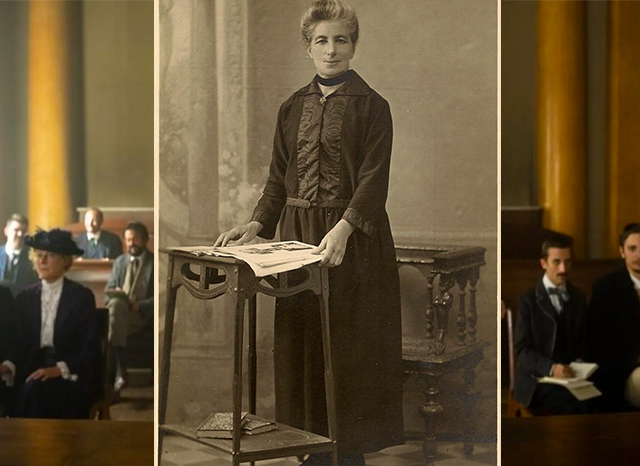
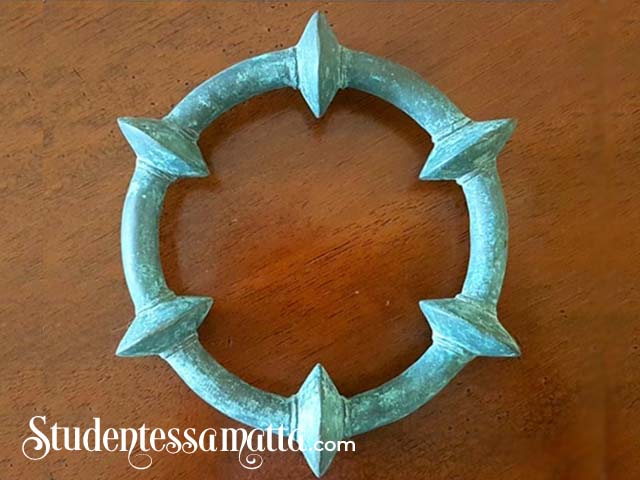



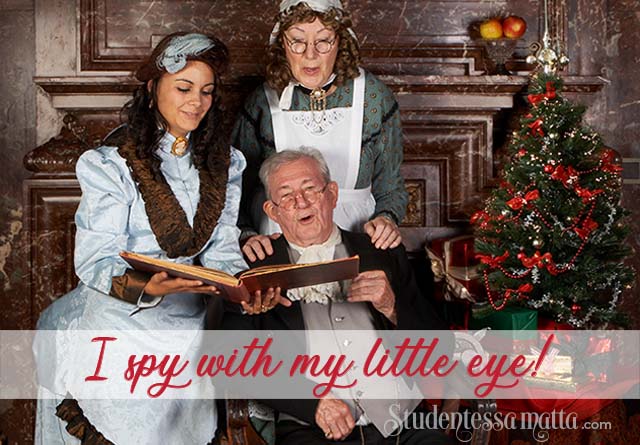






Dal libro scritto da Dumas, “La reine Margot”, ne venne tratto, parecchi anni fa, un bellissimo film; ovviamente Caterina de Medici ci fa una figura barbina, ma del resto le premesse di Dumas sono nazional-popolari, più che storiche, ma la fiorentina è interpretata da una inquietantissima, e bravissima, Virna Lisi.
Non so se il film si trova in italiano, o in inglese, era una coproduzione italo-francese, ma l’ho trovato solo in francese… è stato doppiato, perché lo vidi al cinema, ma non è stato distribuito con il doppiaggio italiano.
Se ti interessano altre figure storiche ti segnalo: Matilde di Canossa, Eleonora D’Arborea, Isabella D’Este, Artemisia Gentileschi… e magari col tempo me ne vengono in mente altre 🙂
C’è una lunga lista delle donne storicamente affascinante, in particolare mi sempre interessava di Artemisia Gentileschi. Trovo i suoi quadri, con il soggetto di Judith e Holofernes che è stato ripetuto tanti volte, impressionanti… e la sua storia personale triste, ma notabile.
Bellissima storia,Melissa!Ho imparato tante cose nuove,però mi hanno sempre detto che “mutande” si usa solo al plurale,no?”La reine Margot”-non è quel film in cui Isabelle Adjani fa l’amore passionante con un vagabondo che aveva incontrato per strada?Leo
P.S.Sullo stesso argomento,mi sa che sei diventata una esperta della vita privata di Berlusconi(“Bunga Bunga.”)A me,invece,lui piace molto perché è un uomo divertente e sa dire tante barzellette.
hai ragione Leo, penso che sia “le mutande” plurale. e no, non sono un’esperta sulla vita privata di Berlusconi o Bunga Bunga! Ma difficile evitare la notizia quando i giornali e internet sono zeppo pieni della notizia e ogni sordido dettaglio! Fra poco Berlusconi va in tribunale…sarà interessante da seguire! :-0
@Leo: si… pensa che io me lo ricordo per le carrettate di cadaveri presenti nella scena del massacro di San Bartolomeo…
La signora in blu e fiordalisi d’oro qui sopra non è Caterina de’ Medici moglie di Enrico II di Valois bensì Maria de’ Medici moglie di Enrico IV di Borbone.
Erano parenti ma molto alla lontana…
Bellissimo la 1 parte ma vi è un errore il ritratto è di maria de medici la 2 regina di Francia
Infatti si vede l abito da incoronazione che è pomposo è superbo.!